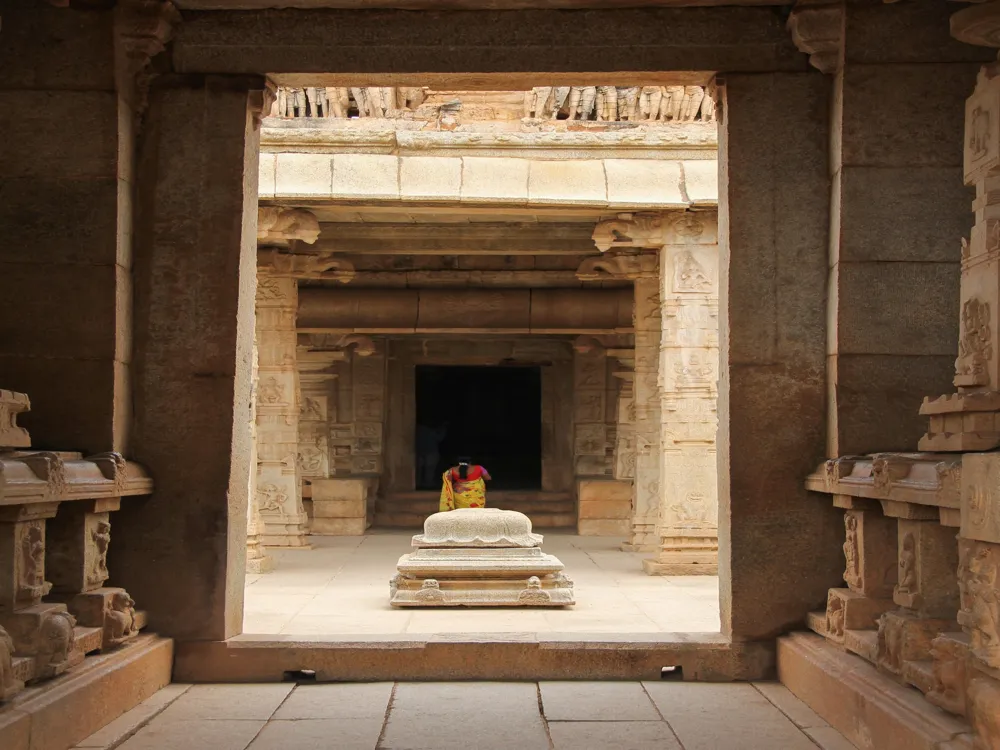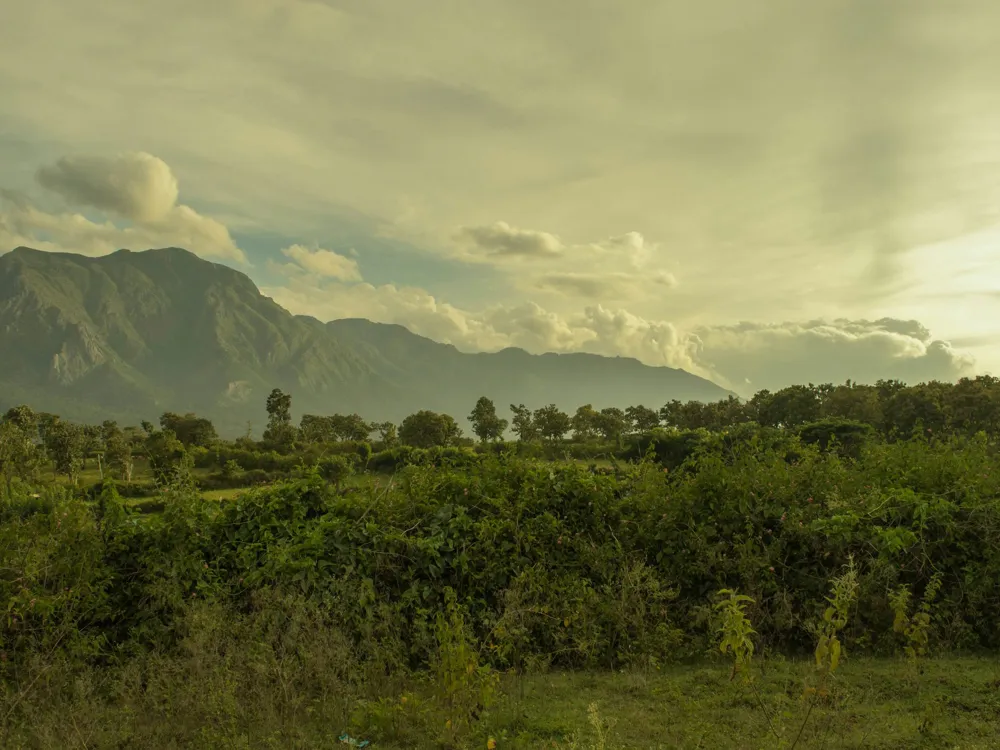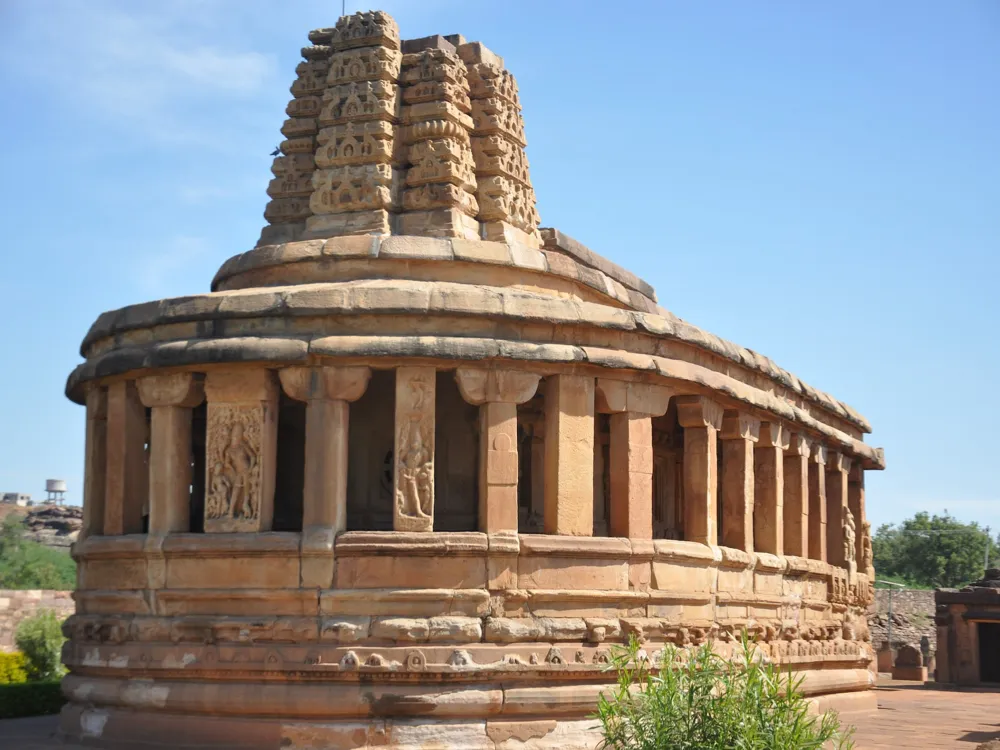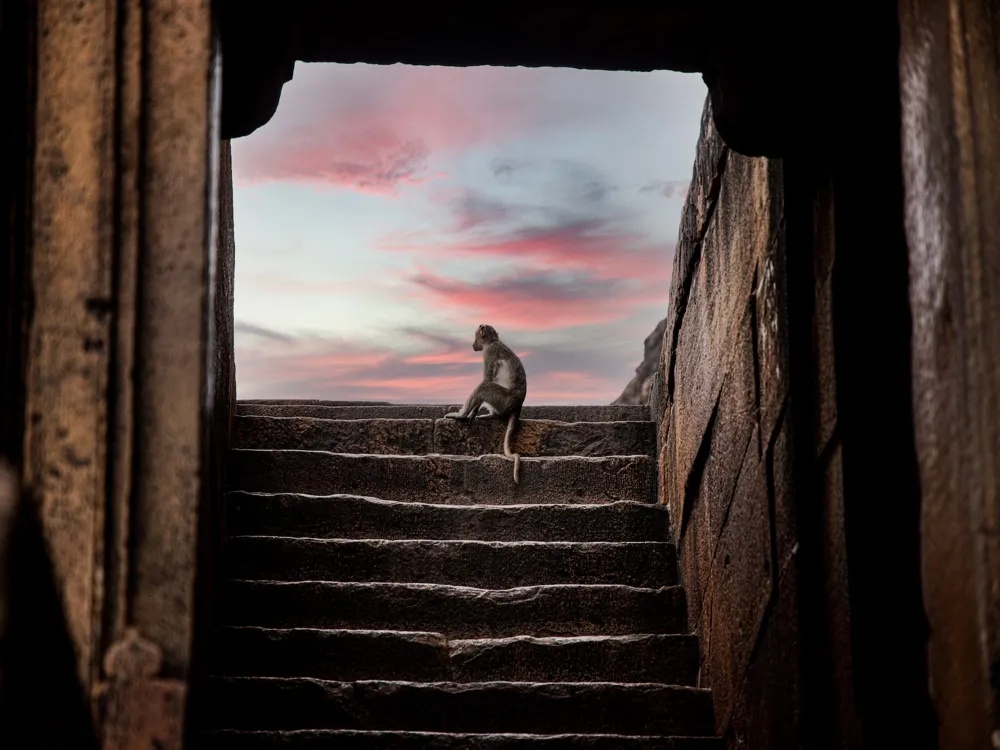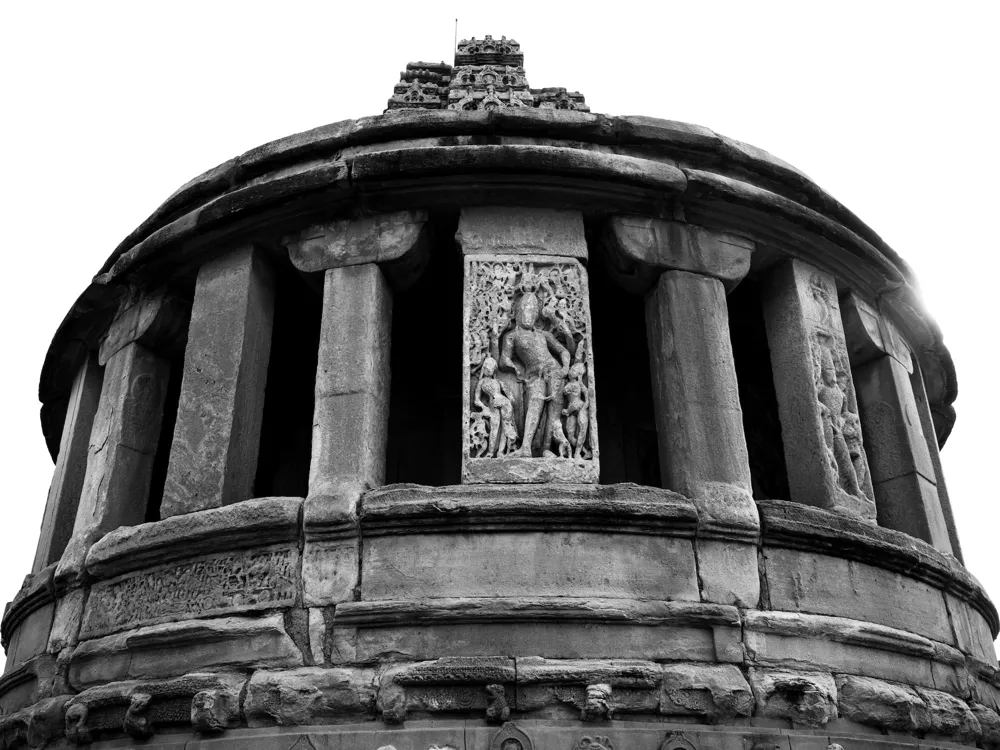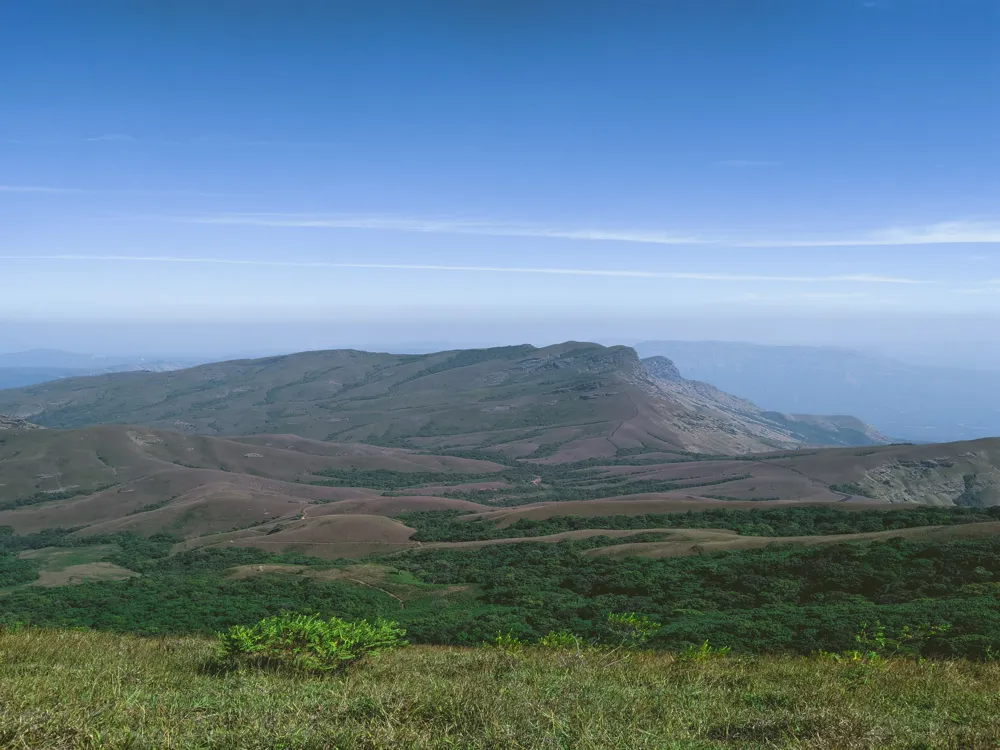Hampi, a UNESCO World Heritage Site in Karnataka, India, is a remarkable historical treasure. The city was the capital of the Vijayanagara Empire in the 14th century. Chronicles left by Persian and European travelers, particularly the Portuguese, state Hampi was a prosperous, wealthy and grand city near the Tungabhadra River, with numerous temples, farms and trading markets. Hampi is significant not only for its architecture but also for its historical importance, as it provides insights into the life and times of the medieval era.
The ruins of Hampi, as seen today, are a vast open museum of history, architecture, and religion, spreading over an area of 26 square kilometers. It is a testimony to the excellence of the Vijayanagara Empire. The site is dotted with numerous ruined temple complexes, including the Virupaksha Temple, which is still intact and in use. The magnificent statues and structures are awe-inspiring, and the intricate stone carvings speak volumes about the artistic talent of the era.
Hampi's landscape is dominated by rocky terrain and lush paddy fields, with the Tungabhadra River adding to its scenic beauty. The city is not only about ruins; it's a journey back in time. Every rock, every path, and every temple has a story to tell, immersing visitors in the tales of valor and chivalry of the past. The place is also significant for its association with the epic Ramayana, believed to be the monkey kingdom Kishkindha.
To truly understand the essence of Hampi, it's essential to delve into its history. It was established in the mid-14th century by two local princes, Harihara I and Bukka Raya I. The city flourished under the rule of Krishnadevaraya, one of the greatest kings of the Vijayanagara Empire. During this period, Hampi saw an incredible flourish of art, architecture, and literature, which still resonates in the ruins that remain.
Hampi's decline began in 1565 after the Battle of Talikota, when it was invaded by the Deccan Muslim confederacy. The city was pillaged, looted, and largely destroyed, marking the end of a glorious era. However, the remnants of its grand past continue to attract historians, archaeologists, and tourists from all around the world. The site's history, coupled with its scenic beauty and architectural grandeur, makes Hampi a must-visit destination for those interested in India's rich heritage.
The architecture of Hampi is a profound testament to the ingenuity of the Vijayanagara Empire. This historic site showcases a unique blend of Dravidian and Indo-Islamic architecture, reflecting the diverse cultural influences that the empire was exposed to. The entire city can be viewed as an open-air museum with an extravagant display of large temples, palaces, market streets, aquatic structures, fortifications, and an abundance of other structures.
The Virupaksha Temple, dedicated to Lord Shiva, is the centerpiece of Hampi's architectural marvels. It dates back to the 7th century and represents the evolution of Vijayanagara temple architecture over several centuries. The temple's 50-meter high gopura (tower) is a landmark of Hampi, visible from a great distance. The intricate carvings on the temple walls, pillars, and towers depict scenes from Hindu mythology, showcasing the exceptional craftsmanship of the sculptors.
Another significant structure is the Vittala Temple, famous for its extraordinary stone chariot and musical pillars. The stone chariot, a shrine built in the form of a temple chariot, is a symbol of Hampi's architectural excellence. The musical pillars of the Vittala Temple are a set of 56 pillars that produce musical tones when struck. This architectural wonder exemplifies the scientific knowledge and artistic creativity of its builders.
Hampi's unique feature is its use of locally available materials, primarily the hard granite rock. The empire's architects mastered the art of turning this hard granite into beautifully detailed carvings. They built massive structures without using mortar, relying instead on precision in cutting and aligning the rocks.
The Lotus Mahal, an exquisite example of Indo-Islamic architecture, stands out with its symmetrical design and fine geometric patterns. Its name comes from the lotus bud carved in the center of the dome. This structure is believed to have been a socializing area for the royal women.
The city's urban planning also demonstrates advanced engineering skills. The irrigation systems, water storage tanks, and the complex canal system for the distribution of water are examples of the high level of sophistication in civic planning. The stepped tanks, especially the Pushkarni, are architectural masterpieces, indicating a high degree of precision in their construction.
Hampi's architecture is not only about grand temples and royal buildings; it also includes humble structures like the homes of common people, market areas, and public utility buildings, which provide a comprehensive picture of life during the Vijayanagara Empire. This architectural legacy of Hampi makes it an invaluable resource for understanding the social, religious, and economic aspects of the past.
The ideal time to visit Hampi is from October to February when the weather is pleasant. The monsoon season from June to August brings lush greenery but can hinder exploration due to rain. Stay options range from budget homestays to luxury resorts. It's advisable to book in advance, especially during peak tourist season. Renting bicycles or mopeds is a popular way to explore Hampi. Local auto-rickshaws and guided tours are also available for those looking for a more relaxed experience. Don't miss the local Karnataka cuisine. The Mango Tree restaurant is a popular choice among tourists for its authentic flavors and riverside location. Many of Hampi's sites are religiously significant. Dress modestly and remove footwear when entering temples. Photography might be restricted in certain areas. Consider hiring a local guide for detailed insights into Hampi's history and architecture. Audio guides are also available at major sites.
Hampi is well-connected by road, rail, and air. The nearest airport is in Hubli, around 143 km away. From there, you can hire a taxi or take a bus to Hampi. Hospet, 13 km from Hampi, is the nearest railway station. Regular bus services are also available from major cities like Bengaluru, Hyderabad, and Goa. Driving to Hampi offers a scenic route but ensure your vehicle is in good condition as some stretches might be challenging.
Overview of Hampi, Karnataka
Architecture of Hampi
Tips When Visiting Hampi
Best Time to Visit
Accommodation
Transportation
Local Cuisine
Respect Local Customs
Guided Tours
How To Reach Hampi
Zenana Enclosure
Hampi
Karnataka
NaN onwards
View hampi Packages
Weather :
Label : Must Visit
Tags : Historical Site
Entry Fees : Entry Fee for Indians: 10.00
Entry Fee for Foreigners: 250.00
Entry Fee for Children: Free for Children under 15 years of age
Photography: Allowed (no extra charges levied)
Video Charges: RS. 25.00
Timings : 8:00 AM to 6:00 PM daily
Planning a Trip? Ask Your Question
Hampi Travel Packages
View All Packages For Hampi
Top Hotel Collections for Hampi

Private Pool

Luxury Hotels

5-Star Hotels

Pet Friendly
Top Hotels Near Hampi
Other Top Ranking Places In Hampi
View All Places To Visit In hampi
View hampi Packages
Weather :
Label : Must Visit
Tags : Historical Site
Entry Fees : Entry Fee for Indians: 10.00
Entry Fee for Foreigners: 250.00
Entry Fee for Children: Free for Children under 15 years of age
Photography: Allowed (no extra charges levied)
Video Charges: RS. 25.00
Timings : 8:00 AM to 6:00 PM daily
Planning a Trip? Ask Your Question
Hampi Travel Packages
View All Packages For Hampi
Top Hotel Collections for Hampi

Private Pool

Luxury Hotels

5-Star Hotels

Pet Friendly








